2008年3月27日 星期四
德國指揮家來台 詮釋巴赫難度最高合唱曲
2008.03.27 07:37 pm
鑽研「音樂之父」巴赫權威的德國指揮家海慕特‧瑞霖 (HelmuthRilling)應邀來台,將在三月二十九日率領台北愛樂合唱團、長榮交響樂團於國家音樂廳演出巴赫的「B小調彌撒」,此曲華麗而難度甚高的演唱技巧,國內至今尚無演出紀錄,此次台灣首演令人期待。
台北愛樂表示,巴赫的「B小調彌撒」被譽為「音樂領域中最崇高的作品」,這一次由高齡七十五歲,畢生鑽研巴赫音樂的海慕特‧瑞霖指揮,由知名聲樂家廖聰文、鄧吉龍、旅德聲樂家李佩穎以及德籍女低音安亞‧許洛瑟(Anja Schlosser)擔任獨唱。
海慕特‧瑞霖畢生研究巴赫音樂,自1970年起每年七月皆於美國奧瑞岡州舉行巴赫音樂節,並開設大師班研究巴赫音樂作品。1981年瑞霖又創立國際司徒加巴赫音樂學院,並以十四年的時間完成史上第一套完整的巴赫清唱劇錄音。
西元2000年,海慕特‧瑞霖指導完成了巴赫作品全集錄音,共一百七十二張CD,在國際上贏得了最高的評價。這一次是繼2005年與台北愛樂合唱團合作布拉姆斯德文安魂曲後,再次與台灣的聲樂家與合唱團合作。
2008年2月29日 星期五
Guggenheim's master of the art of global branding steps down as museum director
Friday February 29, 2008
The Guardian
Thomas Krens, the man who helped turn the Guggenheim into a globally renowned art brand and expanded its reach through audacious projects around the world, is to step down from one of the top jobs in museum direction after almost 20 years.
His stepping aside brings to an end an era in the history of the Guggenheim and could have a big impact on both its future and that of art museum direction in general. He is seen as a pioneer of the model of global branding that has been echoed by other big institutions.
But Krens has also been a figure of controversy, with his reputation for an abrasive management style and for the priorities he brought to the Guggenheim.
A graduate of the Yale school of management, he was a representative of a new breed of museum directors whose expertise lies in business organisation rather than in traditional academic scholarship.
His term in office saw the Guggenheim expand, both in terms of its endowment, which increased six times to $118m (£52m), and in its global stretch. His flagship project was the Bilbao Guggenheim, the instantly recognisable titanium-clad building designed by Frank Gehry that has proven to be a huge success, attracting 1m visitors a year.
Under Krens' leadership, a new Guggenheim museum, again designed by Gehry, is to be completed in Abu Dhabi in 2012 which will embody his global ambitions by exhibiting art from all over the world.
But the worldwide empire-building also brought Krens criticism that he was failing to nurture the jewel in the Guggenheim crown - the Frank Lloyd Wright building in New York's upper east side.
Three years ago he was involved in a bruising struggle with the largest donor to the Solomon R Guggenheim foundation, Peter Lewis, who resigned after he accused Krens of losing sight of the main focus of the organisation - its New York flagship.
Many of Krens' most ambitious overseas projects failed to get off the ground, and though the model of branding and expansion has been mirrored by institutions such as the Tate in the UK and the Louvre in Paris, they have tended to be more modest in scale or have been achieved, as in the case of the Louvre, with government support.
Krens was also the subject of the mumblings of art critics who said his choice of shows on occasions fell short in terms of scholarship.
He staged a show of Armani suits sponsored by Armani itself, while The Art of the Motorcycle was in part paid for by BMW.
Under the terms of his change in job title, Krens will remain in charge of the Abu Dhabi project, which he said was "truly spectacular" in its scope and scale. "Our objective is to make something completely new, the best museum of modern and contemporary art in the world."
But his departure allows the Guggenheim to bring the New York flagship back under the same management umbrella as the foundation's other possessions: Bilbao, the Peggy Guggenheim Collection in Venice, the Deutsche Guggenheim in Berlin and the Guggenheim Hermitage in Las Vegas. It also opens the door to applications from top museum professionals who had been known to be hesitant to work beneath the dominant figure of Krens.
"We expect interest will be high and the candidates will be top tier," the foundation's chairman, William Mack, said.
Robin Cembalest, executive editor of ARTnews, said that by vacating the post, Krens had "opened the door to curators and directors from major institutions applying for the top job. Who the board picks will give a clear sign of where they want the Guggenheim to go."
2008年2月27日 星期三
Sale of the century: UK gets art collection for 80% off
· Bequest ranks among those by Samuel Courtauld and Henry Tate
Mark Brown, arts correspondent
Wednesday February 27, 2008
guardian.co.uk
An act of artistic philanthropy on a par with Britain's greatest - including bequests by Samuel Courtauld and Henry Tate - was unveiled today in a move that will see 725 works of postwar and contemporary art donated to the nation.
The London dealer Anthony d'Offay is giving over almost his entire collection - now conservatively valued at £125m - for the price he paid originally. The collection contains some of the finest works by the most important artists of the last 50 years, including Joseph Beuys, Gilbert and George, Jeff Koons and Damien Hirst. It will be called Artist Rooms and it will be jointly owned and managed for the nation by the National Galleries of Scotland and Tate.
The scale of the donation is remarkable: enough art to easily fill a floor and a half of London's Tate Modern. Artist Rooms will take the form of 50 rooms of contemporary art by 25 artists, with the intention that they will be seen across the UK and not just in London and Edinburgh. The first partners will include galleries as far apart as Inverness, Bexhill and Cardiff.
D'Offay is offering the art at the original price paid rather than its current value. That amounts to almost £28m with £10m each being paid by the British government and the Scottish government. The remaining £8m will come from the Art Fund (£1m) and National Heritage Memorial Fund (£7m).
"He is making a loss," said the Tate's director Nicholas Serota. "It is one of the most generous gifts that has ever been made to museums in this country. Anthony's concept has always been to try and show artists in depth. That's how he has collected and that's how he would like this gift to be seen. A gift of this magnitude will completely transform the opportunity to experience contemporary art in the UK."
D'Offay told the Guardian the idea of Artist Rooms had been seven years in the planning. "It's really to do with education for young people. Outside London and Edinburgh it is very difficult to see great contemporary art. I was born in Sheffield and brought up in Leicester and I was very conscious that what I could see in museums was 18th-century portraits, Egyptian mummies and stuffed animals.
"Art is important because it stimulates young people's creativity. If you see great art it makes you ask questions and if you ask questions it makes you seek answers. It's always been in my mind that this is something I wanted to do."
D'Offay was originally in talks with Scotland's galleries and the Tate became involved because of the sheer scale.
Much of the art will plug significant gaps in Britain's national collections. Three rooms will comprise 69 black-and-white photographs by the pioneering Diane Arbus who, despite her reputation as one of the greatest American photographers, is not represented at either Tate or the National Galleries of Scotland.
It is a similar story for other artists. Tate holds just one work by Jeff Koons and the NGS none. Now D'Offay is giving over 17 Koons works including Winter Bears, 1988. Robert Mapplethorpe, the boundary-pushing American photographer is not represented at all, but now three rooms will be filled with 64 photographs, probably the best collection in the world after the Guggenheim's.
D'Offay is also donating a breathtaking collection of 136 works by Joseph Beuys, including 20 sculptures; nine works by Gilbert and George including one of their earliest together, George the Cunt and Gilbert the Shit from 1970; five Damien Hirsts including his largest early spot painting and a sheep in formaldehyde; six important works filling three rooms by German artist Anselm Kiefer; 14 works which at a stroke vastly improve the collection of Gerhard Richter; and 22 works by American Ed Ruscha. The list goes on.
Both the galleries and d'Offay hope it will set a precedent and act as an example for others with the wherewithal to follow.
John Leighton, director of the National Galleries of Scotland, said: "Our postwar and contemporary art collections are weak - at a stroke it becomes one of international significance."
The touring nature of the scheme is central and 11 regional galleries - Aberdeen, Bexhill, Colchester, Glasgow, Inverness, Middlesbrough, Cardiff, Walsall, Orkney, Belfast, Wolverhampton - have already signed up to host rooms. Nor is it a finished project. "This isn't something that is locked, finished, complete," said Serota. "We would hope to buy one or two more rooms a year."
Serota said the donation was up there with the great bequests which led to the establishment of the Tate, by Henry Tate at the end of the 19th century, and the Courtauld Institute of Art, by Samuel Courtauld in the 1930s and 1940s.
"It is an extraordinary act of philanthropy and I don't know the equivalent of it anywhere else in the world. It will be a legacy for future generations," he added.
It is hoped the public will get to see the first rooms in spring 2009.
Andy Warhol, Skulls (1976)
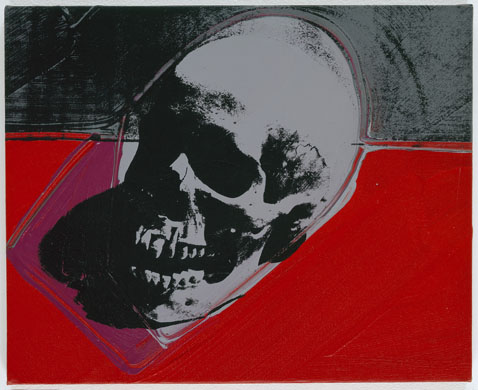
Winter Bears (1988) by Jeff Koons
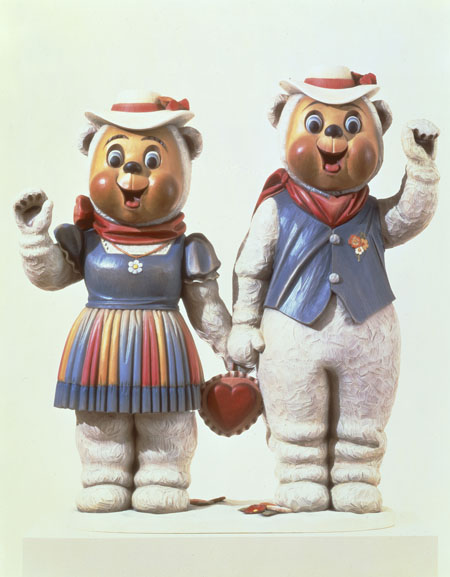
Gilbert & George, Existers (1984)
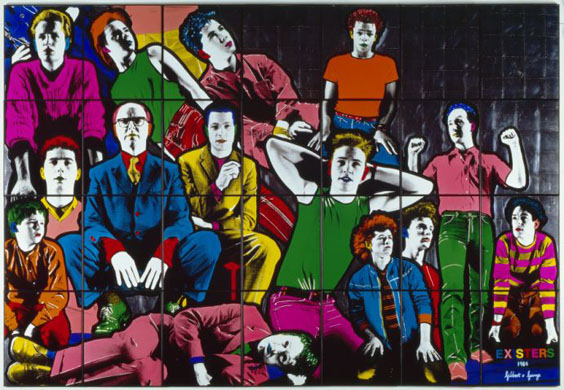
Ron Mueck, Spooning Couple (2005)
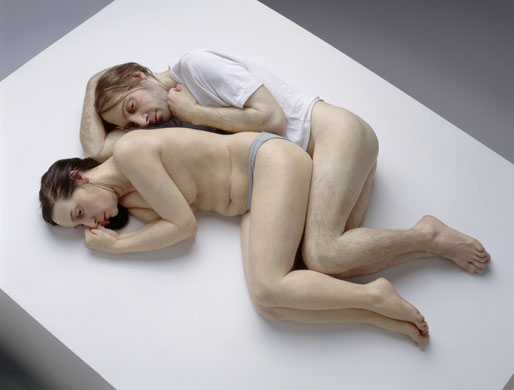
Wall Drawing #1136 (2004) by Sol Le Witt
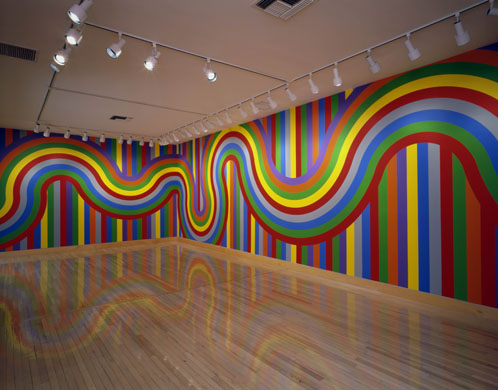
Self-Portrait (1983) by Robert Mapplethorpe
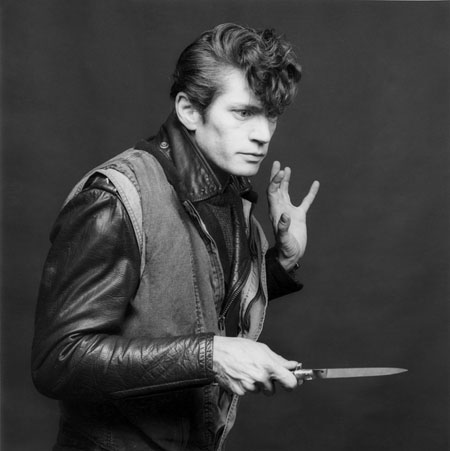
Bruce Nauman, La Brea/Art Tips/Rat Spit/Tar Pits (1972)
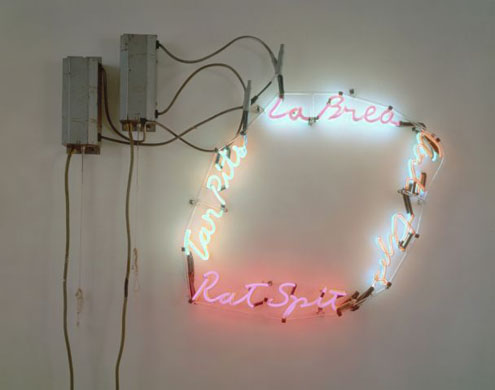
Damien Hirst, Away from the Flock (1995)
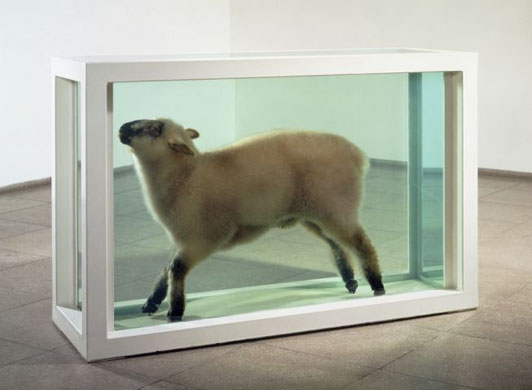
Richard Hamilton, Four Self-portraits (1990)
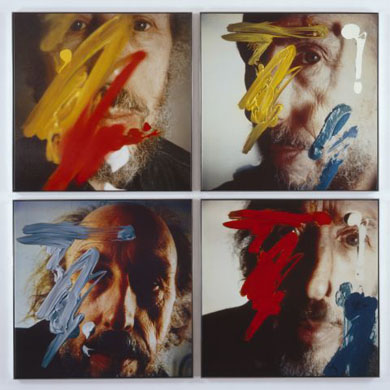
Gerhard Richter, Abstraktes Blid (1994)
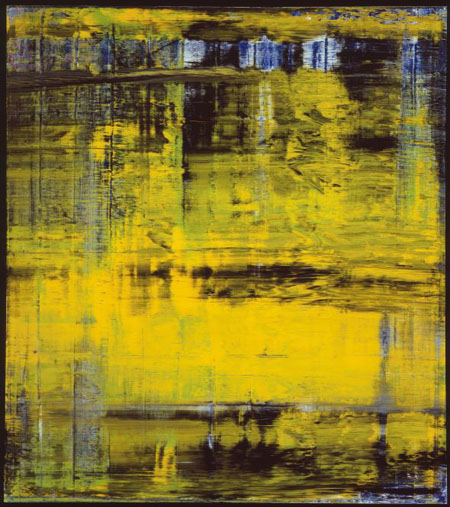
2008年2月14日 星期四
Taiwan's National Palace Museum - Treasure island
From The Economist print edition
Beauty is truth, truth beauty. But make sure the law is watertight
IT IS the finest collection of imperial Chinese art anywhere. But Taipei's National Palace Museum rarely sends its treasures overseas. Indeed the exhibition that opens in Vienna's Kunsthistorisches Museum on February 26th will be only the fourth big foreign loan it has made since it opened in 1965. Like everything else in Taiwan, the art collection is coloured by the tense relationship with China. The exhibition is possible only because Austria, like America, France and Germany, the three earlier destinations, passed legislation granting exhibits immunity from judicial seizure, to stop China staking a legal claim to them.
Of the Palace Museum's 650,000 items, 230,000 come from China's imperial collection, started in the Song dynasty in the 10th century. Partly as a badge of political legitimacy, and partly to protect the artworks from the advancing Communists, Chiang Kai-shek's Kuomintang shifted them from China to Taiwan in 1948 and 1949 before retreating there after losing the civil war.
For nearly 30 years the museum served as a fortress guarding these political symbols from Beijing's Forbidden City. As democracy took root in Taiwan, however, the museum became a diplomatic tool to help counter Taiwan's acute isolation. The president's wife, Wu Shu-chen, made an unusual trip to accompany exhibits to Germany in 2003.
According to Lin Mun-lee, the museum's director, Japan has lobbied for some 20 years to have a collection appear there, but its parliament has not passed the regulations needed. A loan to Taiwan's only diplomatic partner in Europe, the Vatican, has likewise not been possible because Italy would not offer artworks immunity from seizure.
An official from China's State Administration of Cultural Heritage suggests that Beijing has never considered reclaiming the objects from Taiwan because “Taiwan is part of China.” The island's independence-minded Democratic Progressive Party administration has realised that returning the treasures to China is not on, and has tried to use them to its own advantage. But Ms Lin says that, should Taiwan one day be forced to make a choice between its destiny and the treasures, it should be a democratic decision by Taiwan's people. China, of course, will do all it can to deny them the choice.
2006年10月14日 星期六
Power list shows growth of British influence in art
Saturday, 14 October 2006
British influence in the art world has surged in the past year, although the most important player of all is François Pinault, the French owner of Christie's auction house.
That is the conclusion of the ArtReview magazine as it announces its Power 100 list, which has been tracking collectors, gallery owners, curators and art fair organisers for the past five years. M. Pinault takes the top spot thanks to his new museum at the Palazzo Grassi in Venice, the opening of which was attended by almost everyone of importance in the art world. Americans dominate the list with 40 entries, but the British have 25.
John Weich, the editor-in-chief of ArtReview, said: "The Americans just have the numbers, but the British market has definitely jumped in prestige - not just in numbers but in influence."
Sir Nicholas Serota, director of the Tate Gallery, is the most powerful British player, at number three in the 2006 survey - the same position he held in 2003 and 2004 before dropping a place last year.
He lies behind Larry Gagosian, the New York gallery owner who also deals in London, and ahead of Glenn Lowry, the director of the Museum of Modern Art (Moma) in New York. Damien Hirst has dropped from pole position to 11th, but Charles Saatchi, the collector, and Matthew Slotover and Amanda Sharp, who founded the Frieze art fair, are in the top 10.
Mr Saatchi, whose holdings of contemporary American art have just gone on show at the Royal Academy, is at seventh place, up from 19 last year. "He's very hands-on. He's really tuned in to what's going on," said Mr Weich.
Mr Slotover and Ms Sharp rose from 33rd to eighth on the back of the huge pull of the fair they founded with considerable élan in London three years ago. Mr Weich said a few people outside London might have difficulty in accepting the Frieze duo in the top 10. "But in just a few short years they've been able to rally an entire metropolis to adapt its schedule to theirs," he added.
Of the decision to place Sir Nicholas above Mr Lowry, Mr Weich added: "No one can compete with Moma in terms of money. But in sheer numbers of visitors, Tate is the largest contemporary museum in the world. And if you look at authentic attempts to be innovative and evolve what a contemporary art museum can be - for example, with its website - I think Tate is at the forefront."
Gallery owners such as Victoria Miro, who represents Grayson Perry and Chris Ofili; Sadie Coles, whose artists include Sarah Lucas; Maureen Paley; and the Haunch of Venison team, Harry Blain and Graham Southern, have all seen their influence rise.
Jay Jopling, who has just opened a giant new White Cube gallery in St James's, London, in addition to his existing gallery in Hoxton, leaps into the top 20 at 19.
Gallery directors and curators including Iwona Blazwick, of the Whitechapel; Ralph Rugoff, the American who has taken over at the Hayward; and Hans Ulrich Obrist, the curator at the Serpentine, have all risen in the power stakes. Artists included this year include Tracey Emin, who is to represent Britain at the next Venice Biennale, Gilbert and George, Gavin Brown and Anish Kapoor.
Mr Weich said: "Even though Rugoff and Obrist aren't British, [the fact they have come to work here] does indicate the pull that London has as a growing and important art capital."
The importance of sponsorship is recognised, with UBS and Deutsche Bank winning a place, and the increasing use of the internet has secured Google 100th place. Other British-based entrants include David Adjaye and Rem Koolhaas, architects; Simon de Pury, auctioneer; and James Lingwood and Michael Morris, from the art commissioning body Artangel.
The top 20
* 1: François Pinault, collector and the owner of Christie's
* 2: Larry Gagosian, dealer and gallerist
* 3: Sir Nicholas Serota, director of the Tate
* 4: Glenn D. Lowry, director of the Museum of Modern Art, New York
* 5: Samuel Keller, director of ArtBasel fair
* 6: Eli Broad, collector and philanthropist
* 7: Charles Saatchi, collector and gallery owner
* 8: Matthew Slotover and Amanda Sharp, founders of Frieze art fair, London
* 9: Bruce Nauman, artist
* 10: Jeff Koons, artist
* 11: Damien Hirst, artist
* 12: Brett Gorvy and Amy Cappellazzo, directors of Christie's international post-war and contemporary art department
* 13: Robert Storr, curator and academic
* 14: Iwan Wirth, dealer and gallerist, Hauser and Wirth
* 15: Marian Goodman, dealer/gallerist
* 16: David Zwirner, dealer and gallerist
* 17: Gerhard Richter, artist
* 18: Marc Glimcher, dealer and gallerist
* 19: Jay Jopling, dealer and gallerist, White Cube
*20: Mike Kelley, artist
2003年10月30日 星期四
Make-up tycoon topples Saatchi as art's greatest power
Thursday, 30 October 2003
Charles Saatchi may have lost his touch but Sir Nicholas Serota has more power than ever. Damien Hirst is in, Tracey Emin out. And a doorman at Christie's, New York, is an unknown force to be reckoned with.
Charles Saatchi may have lost his touch but Sir Nicholas Serota has more power than ever. Damien Hirst is in, Tracey Emin out. And a doorman at Christie's, New York, is an unknown force to be reckoned with.
A list of the 100 most powerful people in the art world will provoke dissent and debate from the heart of contemporary British art in Hoxton, east London, to the wealthiest galleries in New York.
After the ArtReview magazine's inaugural Power 100 last year, the London publication today releases its new snapshot of the artists and dealers, the collectors and the museum directors, who have made the most difference to 20th and 21st-century art in the past year. The dominant force, the magazine ruled, was the cosmetics billionaire Ronald Lauder, who knocked Charles Saatchi, Britain's best-known collector, off the top. Mr Lauder has funded a high-profile collection and a new museum in New York. But perhaps his role in retrieving art stolen by the Nazis has enabled him to pip those who are simply wealthy and/or discerning.
In second place, as last year, is Francois Pinault, the owner of the Christie's auction house. The Tate director, Nicholas Serota, rises to third place, though with a question mark over how he can avoid undermining individual gallery chiefs in the parts of his empire in London, Liverpool and St Ives.
The top 10 includes the German painter Gerhard Richter, the Japanese artist and Louis Vuitton designer Takashi Murakami and the Greek industrialist and collector Dakis Joannou. Ossian Ward, the editor of ArtReview, who compiled the rankings with contributors, said: "All the key figures in Britain are still there and perhaps more have crept in. Some of our younger dealers, Sadie Coles, and Maureen Paley, are now included. Nicholas Serota moving up is an indication of the international status of the Tate. It is the most important global-branded museum."
The ambivalent reaction from many artists and critics to Charles Saatchi's gallery in the old County Hall contributed to his fall. But Ossian Ward said this was no indicator of where Mr Saatchi might end up. "Saatchi has obviously moved down but he's still one of the few British collectors actively shopping in the East End every week. Other British collectors aren't that voracious, but he could still discover the next generation of Young British Artists."
Jay Jopling, who acts for Hirst and other big names from his White Cube gallery, and Norman Rosenthal, the idiosyncratic exhibitions secretary at the Royal Academy in London, slip slightly. But Hirst, buoyed by new shows and ventures including sending paintings into space, rises up the rankings. And Jake and Dinos Chapman, hot favourites to win this year's Turner, make it for the first time as does the Pop Art veteran Bridget Riley, 72.
After a dearth of architects last year, Zaha Hadid and David Adjaye are added. But Ossian Ward said everything could change next year. "If this is going to be an annual barometer we need to reflect that in the ups and downs of people," he said. Number 100 must be a prime example. Adrian Mullish is a dentist who treated many Young British Artists when they were poor and paid him with art. The doorman at Christie's Rockefeller Centre headquarters is Gil Perez, who knows everyone who buys or sells.
The top 50
1 (3) Ronald Lauder: Cosmetics billionaire who founded the Neue Galerie in New York
2 (2) François Pinault: Owner of Christie's
3 (6) Nicholas Serota: Director of Tate galleries
4 (23) Larry Gagosian: New York dealer, with an enviable stable of artists and clients
5 (4) Gerhard Richter: Reputedly the world's most expensive living artist
6 (1) Charles Saatchi: Advertising executive
7 () Takashi Murakami: Japanese artist involved in commercial ventures
8 () Maja Oeri Hoffmann: President of a Swiss foundation which buys contemporary art, pictured above right
9 () Leonard Lauder: Ronald's older brother. Chairs the Whitney Museum of American Art
10 (20) Dakis Joannou: Greek industrialist who has run his own museum of contemporary art
11 () Santiago Sierra: Subversive Spanish-born artist
12 (37) David Geffen: Record tycoon who moved to house his art collection
13 () Herzog & de Meuron: Tate Modern architects who won an architectural prize for the Laban Dance Centre
14 () Glenn Lowry: Ambitious director of the Museum of Modern Art, New York
15 (61) Samuel Keller: Controls growing franchise of art fairs starting with Basel, Switzerland
16 () Leonard Riggio: Founder of Barnes & Noble bookstores who backed a new museum
17 () Iwan Wirth: Swiss dealer, described as Europe's most important commercial gallerist
18 () Barbara Gladstone: US dealer and talent spotter
19 (16) Eli Broad: A collector, donor and patron of 25 major American institutions
20 () Tobias Meyer: Deputy chairman of Sotheby's Europe
21 () Zaha Hadid: Anglo-Iraqi architect, pictured right, who designed a museum in Cincinnati
22 () Dan Cameron: Senior curator of New York's New Museum of Contemporary Art
23 (58) Matthew Barney: Artist and film-maker
24 () Maurizio Cattelan: Maverick Italian artist
25 (18) Jay Jopling: London's White Cube gallery owner
26 () Adam Weinberg: Director of New York's Whitney Museum
27 () Sadie Coles: London art dealer
28 (44) Marian Goodman: New York gallerist whose roster of stars includes Gerhard Richter
29 () Peter-Klaus Schuster: German who has run Berlin's 17 state museums since 1999
30 () Ed Ruscha: US artist
31 (51) Andreas Gursky: German photographer
32 () David Zwirner: son of powerful Cologne dealer Rudolf Zwirner, has taken the family business to New York
33 (7) Francesco Bonami: director of the 2003 Venice Biennale
34 () Karlheinz & Agnes Essl: Viennese collectors who built their own foundation to house their collection of contemporary art
35 () Sigmar Polke: German artist currently the subject of a major show at Tate Modern
36 () Brett Gorvey: In charge of the major sales of post-war art at Christie's, New York. Also a respected writer
37 () Rafael Vinoly: Uruguay-born, New York-based architect who was a finalist in the competition to rebuild ground zero
38 () Jeffrey Deitch: New York dealer whose two galleries dominate the downtown art scene
39 () Gavin Brown: notoriously impolite Croydon-bred gallerist now based in New York
40 () Louise Bourgeois: Tate Modern's inaugural turbine hall artist who is still working at 92
41 (59) Gerard Goodrow: director of the modern and contemporary art fair in Cologne
42 (32) Norman Rosenthal: hugely influential exhibitions secretary at the Royal Academy, London
43 () Mick Flick: Mercedes car factory heir whose $300m art collection of contemporary works will go on public display next year
44 (78) Matthew Marks: New York gallerist who represents Nan Goldin and Andreas Gursky
45 () Alanna Heiss: promoter of minimalist and conceptual art
46 (15) Bernard Arnault: a notable private collector
47 () Yvon Lambert: a French dealer now opening a new gallery in New York
48 (24) Jeff Koons: the artist, above, whose giant sculptures reveal a strong sense of humour
49 (62) Damien Hirst: British artist still intent on shocking
50 () Gil Perez: the doorman at Christie's headquarters
2001年6月24日 星期日
Portrait of a curator as a reviled man
Sunday, 24 June 2001
There's nothing we British like more than a good row among artists. It has always been the establishment versus the new.
There's nothing we British like more than a good row among artists. There was the so-called Art Quake of 1910, when The Times denounced the first exhibition of Post-Impressionism as "degenerate" and "the rejection of all that civilization has done". Then in 1935 Kenneth Clark, director of the National Gallery, claimed Ben Nicholson's abstract reliefs had contracted "spiritual beri-beri" due to their "fatal defect of purity". It has always been the establishment versus the new.
But last week was different. Not only was the art establishment under attack for its keen espousal of avant-garde conceptual art, but the attacker-in-chief was a traditional figurative artist, complaining of the establishment's partiality. Stuart Pearson Wright, who won the £25,000 first prize at the National Portrait Gallery's BP Portrait Awards for The Six Presidents of the Royal Academy, a group portrait which features suited academics contemplating their mortality, symbolised by a dead chicken, used the occasion to proclaim that Sir Nicholas Serota, director of the Tate Gallery, should be sacked.
His misdemeanour? According to 25-year-old Pearson Wright, he is chief among the villainous members of the arts establishment who ignore young figurative artists and force them to choose between abandoning painting or surviving by "taking day jobs in Burger King".
"If such huge sums of public money are involved, this seems wrong and the public should have more of a say," said Pearson Wright. "I am going to do all I can to change this, and sacking Serota would be a step in the right direction."
Pearson Wright's view echoes those of the Stuckists, a group of painters who post regular manifestos complaining about the art establishment on the internet, and whose leader, Charles Thomson, stood unsuccessfully against the former Secretary of State for Culture, Chris Smith, at the general election.
But as the Stuckists' work is widely considered banal and naive, and their complaints hysterical, they tend to be dismissed as the lunatic fringe. What really made a difference last week was not only Pearson Wright's new-found credibility, but that his attack came shortly after that of the playwright Tom Stoppard. He too questioned the new orthodoxy in his recent speech at the Royal Academy dinner. Then on Wednesday, the spotlight fell again on Nicholas Serota, when the director of Tate Modern, Lars Nittve, resigned, allegedly due to clashes with Serota about the vision for the galleries.
Serota's position at the Tate gives him unsurpassed influence in the contemporary art world. Through gallery acquisitions and his opinions, he can make or break a career. But there is one man who comes a close second: Charles Saatchi, the advertising tycoon and art collector. Together they have embraced "cutting edge" art and their patronage has made its leading players among the most courted figures in the arts today. Artists such as Damien Hirst, Rachel Whiteread and Tracey Emin are celebrities. The Turner Prize secures almost as many column inches as the Booker.
As Saatchi is the Greta Garbo of the art world, and Sir Nicholas Serota was out of the country last week, it was left to Sandy Nairne, director of national and international programmes at the Tate, and Norman Rosenthal, exhibitions secretary at the Royal Academy, to defend the establishment corner. Not only was the controversy "a load of utter bullshit", said Rosenthal, but it needed to be "nipped in the bud". All too many "things made in the name of art", he said, "are kitsch". The job of critics and curators was telling the difference. This, he said, he and his colleagues did "with great responsibility, through an international perspective, not a Little Englander one. It is not possible to paint like Turner these days. Indeed, it wasn't possible for Turner to paint like Titian. Art is about new territory."
Only Charles Saumarez Smith, director of the National Portrait Gallery, where the BP Portrait is hung each year, conceded that there was an argument for change. "For an unusually long period of time the art world has been dominated by one particular brand of practice," he said. "As a result there is a danger of this becoming the new orthodoxy." The fact that visitor numbers to the Portrait Award have doubled as a result of the row, he says, proves that "more people are interested in painting than in cutting edge art".
He points to a whole tranch of 20th-century figurative artists who were once dismissed as "oddball" but are now "seen to be fantastically dominant". The list is headed by Stanley Spencer, whose exhibition at Tate Britain closes this evening, having attracted around 90.000 visitors.
What of the painters themselves? Charles Thomson of the Stuckists heartily applauded Pearson Wright for "his courage" in joining the crusade against "the cul de sac of idiocy generated by the Serota-Saatchi axis". But the most eloquent – and influential – advocate for change was perhaps the Glasgow-based former war artist to Bosnia, Peter Howson. "Art has rules," says the 43-year-old painter. "If you break them, you are on to a false trail."